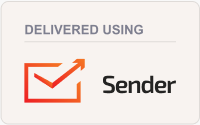What are the clinical signs of CPV?
A dog infected with canine parvovirus will start to show symptoms within three to seven days of infection. The most common clinical signs associated with CPV include:
– Lethargy
– Depression
– Loss or lack of appetite
– Fever
– Vomiting
– Diarrhea (often bloody)
– Dehydration
The severity of CPV cases varies. The stress of weaning can lead to a more severe case of CPV in puppies, as stress weakens the immune system. A combination of CPV and a secondary infection or a parasite can also lead to a more severe case in puppies. Most deaths from parvovirus occur within 48 to 72 hours following the onset of clinical signs. If your puppy or dog shows any of these signs, you should contact your veterinarian immediately.
How is CPV diagnosed?
Parvovirus infection is often suspected based on the dog's history, physical examination, and laboratory tests. Fecal testing can confirm the diagnosis. Currently, the most common and most convenient method of testing for the presence of CPV is the fecal rapid tests or ELISA tests in a clinical setting. The test requires a fecal swab and takes about 10 minutes. While this test is accurate, a negative result does not necessarily rule out parvovirus in a symptomatic dog, as they may not be shedding the viral antigen at the time of testing. Further testing, such as real-time PCR, may be needed in these cases.
What are the treatment options for CPV infection?
There is no treatment to kill the virus once it infects the dog. Treatment options for dogs suffering from CPV involve supportive care and management of symptoms. Treatment options will vary, depending on how sick the dog is, but certain aspects are considered vital for all patients.
– Fluid therapy- counteract dehydration and electrolyte loss
– Antibiotic treatment- prevent potentially fatal body-wide bacterial infection if intestinal
bacteria have entered the bloodstream
– Antiemetic treatment- control vomiting
– Nutritional support
– Others- antiviral treatments, pain management, or blood transfusion
Can CPV be prevented?
Young puppies are very susceptible to infection, particularly because the natural immunity provided in their mothers' milk may wear off before the puppies' immune systems are mature enough to fight off infection. The best method of protecting dogs against CPV infection is proper vaccination. Puppies receive a parvovirus vaccination as part of their multiple-agent vaccine series. These shots are given every 3 to 4 weeks from the time a puppy is between 6 to 8 weeks old until he is at least 16 weeks of age. A booster vaccination is recommended one year later, and then at one to three year intervals thereafter.
How can I kill the virus in the environment?
The virus can contaminate kennel surfaces, food and water bowls, collars and leashes, and the hands and clothing of people who handle infected dogs. It is resistant to heat, cold, humidity, and drying, and can survive in the environment for long periods. The stability of the CPV in the environment makes it important to properly disinfect contaminated areas. CPV can be inactivated by bleach. Cleaning with a solution of one part bleach mixed with approximately 30 parts water is an acceptable method for disinfecting any indoor area (including bedding, food/water bowls, and all surfaces) that once housed an infected dog.
Note
Bioguard’s Qmini PCR can detect CPV-2 DNA in 90 minutes at your clinics using feces as samples.
